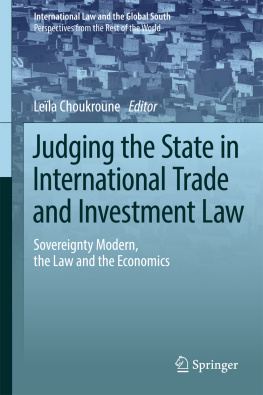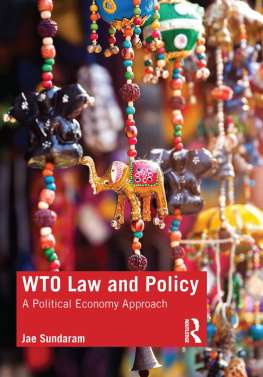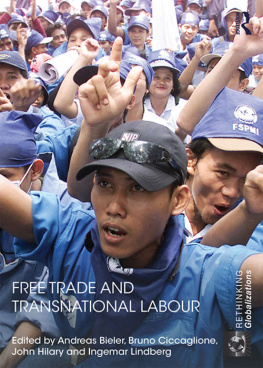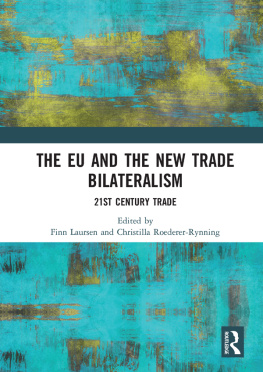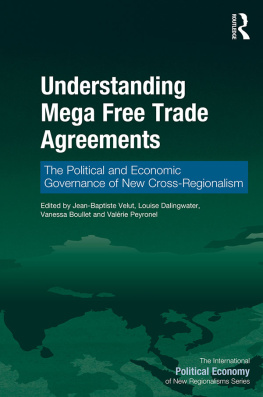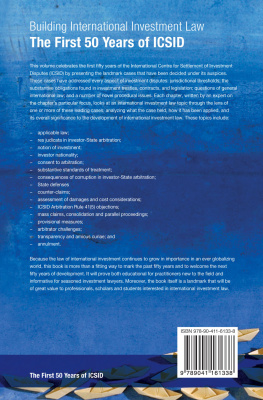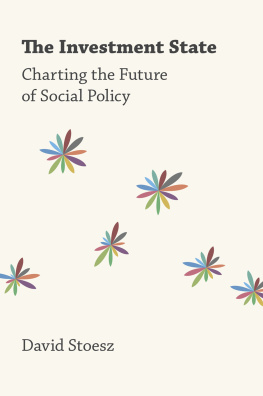Springer Nature Singapore Pte Ltd. 2016
Lela Choukroune (ed.) Judging the State in International Trade and Investment Law International Law and the Global South Perspectives from the Rest of the World 10.1007/978-981-10-2360-6_1
Abstract
Why , how and what for are States sued for breaches of their International trade and investment law obligations? At a time when multilateralism is deeply questioned by the forces of mega-regionalism as well as political and economic contestation, these essential interrogations have never been more pressing. Whether by a permanent court or an ad hoc body, the questioning of judging the State for breaches of its treaty obligations however remains at the core of todays interrogations on the adequacy and legitimacy of trade and Investor States Dispute Settlement System. While rich and diverse in the way it addresses some fundamental issues in international trade and investment dispute settlement, our book does not claim to be exhaustive. Its analysis is voluntarily limited to trade and investment disputes settled at the international level by the World Trade Organisation (WTO) dispute settlement mechanism and international investor States disputes systems. But in this relatively restricted context, Judging the State in International Trade and Investment Law takes into account the latest evolutions of a globalized trade and investment regulation struggling to put peoples expectations at its core, and provides a comprehensive framework and truly original perspective linking the various facets of judicial activity to the specific yet encompassing character of international law and the rule of law in international society.
Why , how and what for are States sued for breaches of their international legal trade and investment obligations? At a time when multilateralism is deeply questioned by the forces of mega-regionalism as well as political and economic contestation, these essential interrogations have never been more pressing. With 3304 International Investment Agreements (IIAs) and almost 600 Free Trade Agreements (FTAs), the Universe of global economic regulation has indeed reached unknown spheres of complexities, which are likely to expand further with the negotiation, by 150 countries, of at least 57 new IIAs. This tumultuous context led the EU and Canada to reconsider their international investment dispute settlement mechanisms and propose, in their new CETA text, an interesting institutionalized system which includes the possibility to appeal decisions and may serve as the basis for the creation of a permanent investment court.
Whether by a permanent court or an ad hoc body, the question of judging the State for breaches of its treaty obligations however remains at the core of todays interrogations on the adequacy and legitimacy of trade and investment dispute settlement systems. So that, again one needs to reflect upon the three fundamental interrogations previously raised above: why, how and what for are States sued in international trade and investment law?
1.1 Why?Justiciability Questioned
The question of justiciability has always been at the centre of international law and the rule of law in international society. The world has dramatically evolved since the 1930s post-Weimar Constitution debates: actors have multiplied and States successively lost and regained presence in economic affairs through the adoption of liberal economic policies and, later, the emergence of new State capitalists in the former socialist countries converted to market economy, but performing Lauterpacht test of justiciability still enables the State, as well as the individual, to address the proper role of law in the international community and, eventually, the relationships between law and politics as expressed in the concept of State sovereignty. Is it then that some disputes are not justiciable as a consequence of this doctrine of sovereignty? For Lauterpacht, the response was negative as long as the rule of law was respected and the applicable rules enforced so that there were no issues of a greater importance than others and the judges and arbitrators did not lack means to apply the law in innovative ways, and to set aside rules that appear to be obsolete or unjust. The resonance with todays trade and investments dilemma is once again striking: are Bilateral Investment Treaties (BITs) negotiated in the liberal 1990s well suited to todays societal need and expectations? Is the WTO compulsory jurisdiction really providing security and predictability to the multilateral trading system as stated in the Dispute Settlement Understanding (DSU) Article 3.2 while preserving the rights and obligations of Members under the covered agreements, and to clarify the existing provisions of those agreements in accordance with customary rules of interpretation of public international law without diminishing the rights and obligations provided in the covered agreements? Are trade and investment adjudicatory body decisions coherent and consistent hence participating to global legal certainty and economic security? To what extent are trade and investment disputes settled in accordance with general international law norms and principles beyond the now traditional yet rhetorical invocation of the Article 32 of the Vienna Convention on the Law of Treaties (VCLT)?
All these questions inform the reasoning of the books contributors to understand Why States are sued in international trade and investment law and why the existing systems have not always been understood as offering a greater range of flexibilities. In their chapter dedicated to claims and counterclaims under Asian multilateral investment treaties, Trisha Mitra and Rahul Donde not only consider who can bring claims and counterclaims, but also what the subject matter of these claims must be. In doing so, they tackle a number of preconceptions and show that nothing virtually restricts States from raising claims and/or counterclaims in investment arbitration while certain treaties such as the Article 17(1)(2)(a) of the Organization of the Islamic Conference (OIC) Agreement provide an equal right to a Member State to make a claim. Julien Chaisse and Dini Sejko equally stress unexpected flexibilities in the current dispute systems in analysing how State capitalism is reshaping international economic law through the precise case of States claimants in international investment disputes. Hence, they unveil a great paradox, that of regime designed to serve the interests of the private sector and which is now protecting the State as a new versatile global economic actor.
1.2 How?Methods and Actors
How could such a transformationand many other more controversialtake place? What are the methods and actors at the core of the trade and investment dispute resolution systems? Who judges? Quis judicabit ? as Lauterparcht could have put it, then becomes the key question. Is the lawyeras judge and arbitratorthe foundation of the rule of law? What are international judges for and what sort of function do they perform in the international trade and investment arena?
On the methods first, Prabhash Ranjan and Pushkar Anand, in their chapter on the determination of indirect expropriation and doctrine of police power in international investment law, critically examine the role of the police power doctrine in judging a claim of indirect expropriation against the host State. This is certainly an important question as it helps to understand whether this doctrine could serve as a benchmark to judge a host States regulatory measures, but also what are the influences either comparative (American) or international (customary law) under which States are judged. On the actors then, James J. Nedumpara examines the background and the key WTO disputes which triggered a policy shift in India towards the State playing a more proactive role in encouraging the building of a unique hybrid trade-related legal capacity. In doing so, he shows how the building of a national capacity upheld a particular development paradigm, of which objectives were to ensure not only market access for products that can affect the livelihood of the maximum number of people, but also safeguard the benefits of the most vulnerable and so protect States and peoples interests. The same objective seems to transpire in the Indian judiciary effort to implement international commitments. India appears as a good student of international trade for A.K. Ganguli whose chapter on the role of Indian judiciary in the realm of international trade and investment law stresses that the judiciary has not only shown deference to Indias international commitments but has gone a step further in giving effect to several international treaties and covenants through its pronouncements, even though in respect of many international treaties India has not been a signatory and, in some cases, the treaties had not been backed by legislations. However, judges are not often that internationally minded or daring and, as demonstrated by Arthur E. Appleton, in an era of court proliferation the processes of appointment of the WTO Appellate Body Members (AB) can go through many pathways and pitfalls. In view of the current WTO AB crisis, the need to critically examine an eminently political process is nothing but evident if indeed the WTO wants to fulfil its mission to provide security and predictability for the multilateral trading system.

